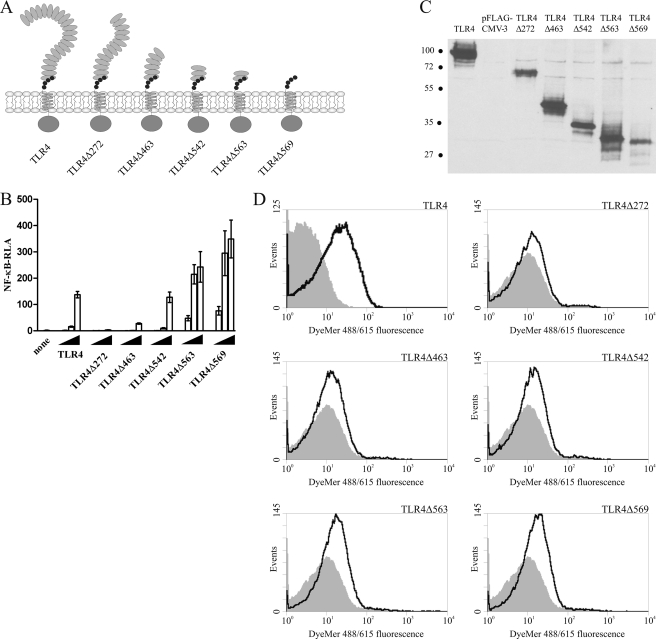FIGURE 4.
Deletion mapping of the region in the TLR4 ectodomain domain responsible for inhibition of constitutive activation. A, schematic representation of the deletion variants of TLR4 as compared with the full-length TLR4. Deletion variants were made by sequential N-terminal deletions of the ectodomain of TLR4. The conserved cysteine residues of the TLR4 juxtamembrane region are represented as small black circles. B, comparison of basal activity of N-terminal TLR4 deletions. HEK293 cells were transiently transfected with reporter plasmids as well as increasing amounts (1 ng, 10 ng, and 50 ng) of plasmid DNA encoding TLR4 or the appropriate TLR4 N-terminal deletion variant. After 26 h, luciferase activity (RLA) was measured in the cell lysates. C and D, TLR4 N-terminal deletion variants are expressed in the cells and reach the cell surface. HEK293T cells were transiently transfected with 2 μg of appropriate plasmid DNA. 48 h after transfection, cells were either lysed and expression of deletion variants was determined by Western blot using anti-FLAG antibody or were analyzed by flow cytometry to determine the cell surface expression level of the constructs. Representative immunoblot analysis results (C) and histograms of mock-transfected cells (filled areas) or cells transfected with the TLR4 deletion variants (solid lines) (D) are shown. Molecular weight marker sizes are given in kDa.

